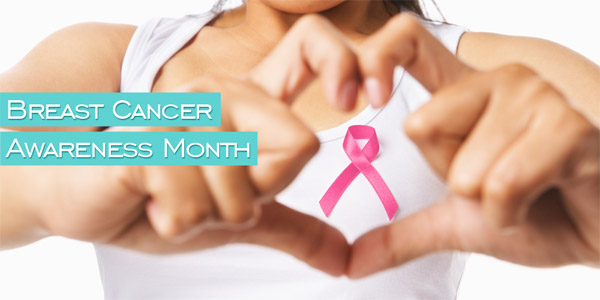October is celebrated as Breast cancer awareness month every year worldwide. Breast cancer organizations work hard to inform the masses that breast cancer exists, assist women to take steps for early diagnosis and support women suffering from breast cancer.
National Breast Cancer Awareness Month (NBCAM) was started by a pharmaceutical company that had ties to tamoxifen, an anti-cancer drug still used widely today. The aim of NBCAM was to make sure every woman was aware of this disease, and to promote mammography as the most powerful weapon in the fight against breast cancer. With changing times and increased knowledge women are no longer shy or afraid to discuss breast cancer or visit a doctors for screenings.
When it comes to breast cancer, we must understand two important facts: that the only people who die of breast cancer are the people whose cancer has spread outside the breast (when it’s contained in the breast, it can’t kill), and that one is not necessarily safe from that spread after treatment—even after a mastectomy to remove the cancer.
What is breast cancer?
Breast cancer starts when cells in the breast begin to grow out of control. These cells usually form a tumour. The tumour is malignant or cancerous if the cells can grow into surrounding tissues or spread (metastasize) to distant areas of the body. Breast cancer occurs almost entirely in women, but men can get it, too. Breast cancers can start from different parts of the breast.
How Breast Cancer Spreads
Breast cancer can spread through the lymph system. The lymph system includes lymph nodes, lymph vessels and lymph fluid found throughout the body. Lymph contains tissue fluid and waste products, as well as immune system cells. Breast cancer cells can enter lymph vessels and begin to grow in lymph nodes.
Breast cancer is always caused by a genetic abnormality. However, only 5-10% of cancers are due inheritance. Others are due to genetic abnormalities that happen as a result of the aging process and the “wear and tear” of life in general.
Breast Pain or Lump: Is It Cancer?
A sharp pain in your breast, possibly with some tenderness, can be scary. It may keep you wondering. A breast lump is often the first thing that women and rush to a doctor. Although breast cancer generally shows no symptoms in the early stage, timely detection can turn a story of breast cancer into a survivor’s tale.
Surprisingly, most of the times a lump in the breast isn’t cancer. From hormonal changes in teens to damaged fat tissue, more than 90 percent of all breast lumps in women in their early 20s to early 50s are noncancerous. A lump that is hard with irregular edges is more likely to be cancerous.
Some early signs of breast cancer include:
- Changes in the shape of the nipple
- Breast pain or a new lump that doesn’t go away after your next period
- Nipple discharge from one breast that is clear, red, brown, or yellow
- Unexplained redness, swelling, skin irritation, itchiness, or rash on the breast
- Swelling or a lump around the collarbone or under the arm
- Dimpling anywhere on the breast
- Unexplained swelling or shrinking of the breast
- A change in the skin texture or an enlargement of pores in the skin of the breast
Nature of breast cancer
- Noninvasive (in situ) cancer is cancer that has not spread from the original tissue. This is referred to as stage 0.
- Invasive (infiltrating) cancer is cancer that has spread to surrounding tissues. These are categorized as stages 1, 2, 3, or 4.
Some common types of Breast Cancer
- Ductal carcinoma is a cancer that forms in the lining of the milk ducts. This is the most common type of breast cancer.
- Lobular carcinoma is cancer in the lobules of the breast. The lobules are where milk is produced.
- Sarcoma is cancer in the breast’s connective tissue. This is a rare type of breast cancer.


